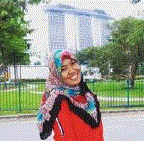Retinal Digital Image Quality Improvement as A Diabetes Retinopatic Disease Detection Effort
DOI:
https://doi.org/10.18196/jet.v4i2.8590Keywords:
Image processing, retinal imagery, diabetic retinopathyAbstract
Image processing is a technical term useful for modifying images in various ways. In medicine, image processing has a vital role. One example of images in the medical world, namely retinal images, can be obtained from a fundus camera. The retina image is useful in the detection of diabetic retinopathy. In general, direct observation of diabetic retinopathy is conducted by a doctor on the retinal image. The weakness of this method is the slow handling of the disease. For this reason, a computer system is required to help doctors detect diabetes retinopathy quickly and accurately. This system involves a series of digital image processing techniques that can process retinal images into good quality images. In this research, a method to improve the quality of retinal images was designed by comparing the methods for adjusting histogram equalization, contrast stretching, and increasing brightness. The performance of the three methods was evaluated using Mean Square Error (MSE), Peak Signal to Noise Ratio (PSNR), and Signal to Noise Ratio (SNR). Low MSE values and high PSNR and SNR values indicated that the image had good quality. The results of the study revealed that the image was the best to use, as evidenced by the lowest MSE values and the highest SNR and PSNR values compared to other techniques. It indicated that adaptive histogram equalization techniques could improve image quality while maintaining its information.
References
Dillak, R. Y. & Bintiri, M.G. (2012). Identifikasi Fase Penyakit Retinopati Diabetes menggunakan Jaringan Syaraf Tiruan Multi Layer Perceptron. Prosiding Lokakarya: Seminar Nasional Informatika 2012 (semnasIF 2012) UPN ”Veteran” Yogyakarta. Yogyakarta, 30 Juni 2012.
Jain, A. K. (1989). Fundamental of Digital Image Processing. Prentice Hall. New Jersey.
Efford, N. (2000). Digital Image Processing a Practical Introduction Using Java. Addison-Wesley Longman Publishing Co., Inc. Boston.
Pratama, A. P., Atmaja, R. D. & Fauzi, H. TSP. (2016). Deteksi Diabetes Retinopati Pada Foto Fundus Menggunakan Color Histogram & Transformasi Wavelet. e-Proceeding of Engineering. 3, 4552–4559.
Putra, I. K. G. D. & Surjana, I. G. (2010). Segmentasi Citra Retina Digital Retinopati Diabetes untuk Membantu Pendeteksian Mikroaneurisma. Teknologi Elektro. 9, 44–49.
Setiawan W., Adi., K. & Sugiharto, A. (2012). Sistem Deteksi Retinopati Diabetik Menggunakan Support Vector Machine. Jurnal Sistem Informasi Bisnis. 3, 109–116.
Putra, A. P., Nurhasanah, Y. I. & Zulkarnain. A. (2017). Deteksi Penyakit Diabetes Retinopati pada Retina Mata berdasarkan Pengolahan Citra. Jurnal Teknik Informatika dan Sistem Informasi. 3, 376–380.
Tentero, I. N., Pangemanan, D. H. C. & Polii, H. (2016). Hubungan diabetes melitus dengan kualitas tidur. Jurnal e-Biomedik (eBm), 4, 1 – 6.
Alghadyan, A. A. (2011). Diabetic retinopathy – An update. Saudi Journal of Ophthalmology, 25, 99–111.
Gonzales, R. C. & Wood, R. E. (2002). Digital Image Processing (2nd ed). Prentice Hall, Inc. New Jersey.
Kadir. A. & Susanto. A. (2013). Pengolahan Citra Teori dan Aplikasi. Penerbit ANDI. Yogyakarta.
Ibrahim. D., Hidayatno, A. & Isnanto, R. R. (2011). Pengaturan Kecerahan dan Kontras Citra Secara Automatis dengan Teknik Pemodelan Histogram. Skripsi, tidak dipublikasikan. Semarang: Fakultas Teknik Universitas Diponegoro.
Munir, R. (2004). Pengolahan Citra Digital dengan Pendekatan Algoritmik. Penerbit Informatika. Bandung.
Handoyo, E. D. (2002). Perancangan Mini Image Editor Versi 1.0 Sebagai Aplikasi Penunjang Mata Kuliah Digital Image Processing. Jurnal Natur Indonesia. 5, 41-49.
Listyalina, l., HA Nugroho, S Wibirama, WKZ Oktoeberza. (2017). Automated localisation of optic disc in retinal colour fundus image for assisting in the diagnosis of glaucoma. Communications in Science and Technology 2 (1).
L Listyalina, DA Dharmawan. Detection of Optic Disc Centre Point in Retinal Image. Journal of Electrical Technology UMY 3 (1), 19-23.
Nugroho, HA., D.A. Dharmawan, L. Listyalina. 2017. Automated segmentation of foveal avascular zone in digital colour retinal fundus images. Jurnal International Journal of Biomedical Engineering and Technology (IJBET). Volume 23Issue 1
Dharmawan, D.A., L Listyalina. 2019. Retinal Blood Vessel Segmentation as a Tool to Detect Diabetic Retinopathy. Journal of Electrical Technology UMY 3 (2), 133-138.
Putra, D. (2012). Pengolahan Citra Digital. Penerbit ANDI. Yogyakarta.
Fadlilah, D., Sawitri, D. R., Suprijono, H. & Wulandari, S. A. (2015). Perbandingan Kinerja Sistem Kompresi pada Citra Digital Retinopath berbasis Transformasi DFT Dan DCT. Skripsi, tidak dipublikasikan. Semarang: Universitas Dian Nuswantoro.
Baharuddin. (2007). Analisa Kinerja Transmisi Citra Digital di Lingkungan Kanal Fading. Teknika Universitas Andalas. 2, 1–7.

Downloads
Published
Issue
Section
License
Copyright
The Authors submitting a manuscript do so on the understanding that if accepted for publication, copyright of the article shall be assigned to Journal of Electrical Technology UMY. Copyright encompasses rights to reproduce and deliver the article in all form and media, including reprints, photographs, microfilms, and any other similar reproductions, as well as translations.
Authors should sign Copyright Transfer Agreement when they have approved the final proofs sent by the journal prior the publication. JET UMY strives to ensure that no errors occur in the articles that have been published, both data errors and statements in the article.
JET UMY keep the rights to articles that have been published. Authors are permitted to disseminate published article by sharing the link of JET UMY website. Authors are allowed to use their works for any purposes deemed necessary without written permission from JET UMY with an acknowledgement of initial publication in this journal.
License
All articles published in JET UMY are licensed under a Creative Commons Attribution-ShareAlike 4.0 International (CC BY-SA) license. You are free to:
- Share — copy and redistribute the material in any medium or format
- Adapt — remix, transform, and build upon the material for any purpose, even commercially.
The licensor cannot revoke these freedoms as long as you follow the license terms. Under the following terms:
- Attribution — You must give appropriate credit, provide a link to the license, and indicate if changes were made. You may do so in any reasonable manner, but not in any way that suggests the licensor endorses you or your use.
- ShareAlike — If you remix, transform, or build upon the material, you must distribute your contributions under the same license as the original.
- No additional restrictions — You may not apply legal terms or technological measures that legally restrict others from doing anything the license permits.






